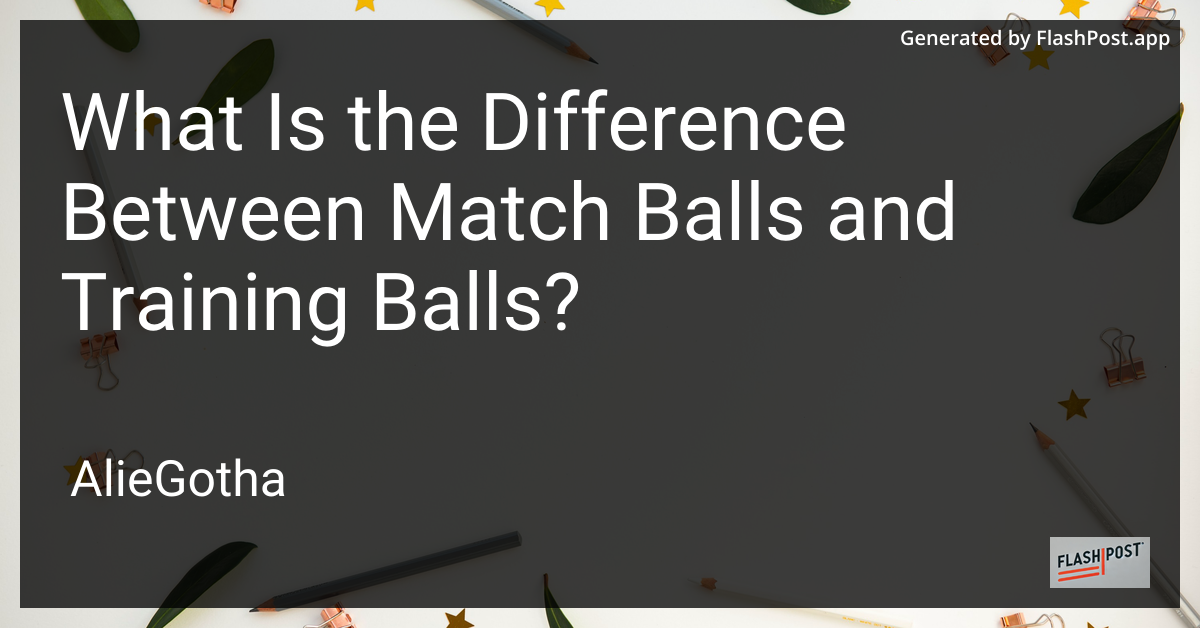

What Is the Difference Between Match Balls and Training Balls?
When it comes to soccer, not all balls are created equal. Whether you’re a seasoned player or an enthusiastic beginner, understanding the difference between match balls and training balls can significantly impact your game. In this article, we’ll delve into the key distinctions between these two types of soccer balls, helping you make informed decisions for your soccer journey.
What are Match Balls?
Match balls are designed for official competitions and professional matches. They adhere strictly to standards set by governing bodies like FIFA, ensuring that they deliver the best performance on the field. Here are some primary features of match balls:
-
Quality Materials: Match balls are constructed using top-grade materials that offer durability and consistent performance. The outer layer is usually made of premium synthetic leather or polyurethane, contributing to its exceptional aerodynamic properties.
-
Precision: These balls are engineered for optimal flight, accuracy, and control. They undergo rigorous testing for shape retention, water absorption, and weight distribution, ensuring they meet the highest standards.
-
Size and Weight: Match balls come in regulation size 5, with a weight between 410 to 450 grams, depending on the level of competition.
What are Training Balls?
Training balls are designed for practice sessions and skill development. They are economically priced and built to withstand extensive use. Here are some characteristics of training balls:
-
Durable Construction: Made from materials that prioritize durability over performance, training balls can endure repeated use on various surfaces, making them ideal for backyard soccer sessions.
-
Versatility: While they offer a similar size and weight to match balls, training balls may vary slightly in terms of flexibility and bounce.
-
Affordability: Due to their construction, training balls are generally more affordable, allowing teams and players to purchase them in bulk for practice needs.
Choosing Between Match Balls and Training Balls
When selecting between match balls and training balls, consider your needs and goals:
-
Competitive Play: If you’re preparing for official matches or high-stakes competitions, investing in a match ball can enhance performance due to its superior quality and precision.
-
Skill Improvement: For daily practice and skill enhancement, training balls are practical and cost-effective. They help players focus on ball control, dribbling, and passing techniques without worrying about wear and tear.
Additional Resources
For those looking to enhance their soccer practice setup or understand the intricacies of soccer goal dimensions, check out these helpful resources:
-
Measuring Soccer Goal Dimensions for insights on getting the right dimensions for your backyard soccer field.
-
Creating Soccer Practice Area provides guidance on setting up an effective soccer practice area in your backyard.
In conclusion, understanding the differences between match balls and training balls is crucial for optimizing your soccer experience. Whether aiming for professional excellence or improving skills, choosing the right type of ball will make a significant difference on the field.
